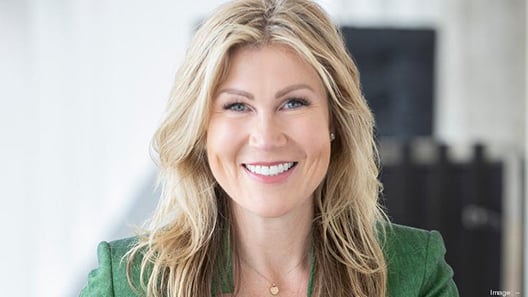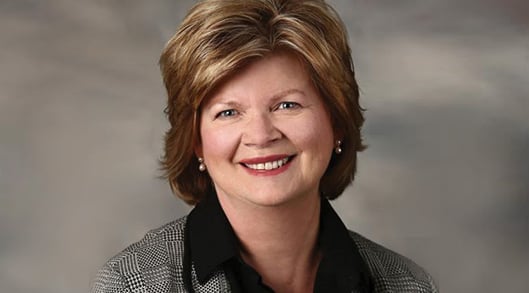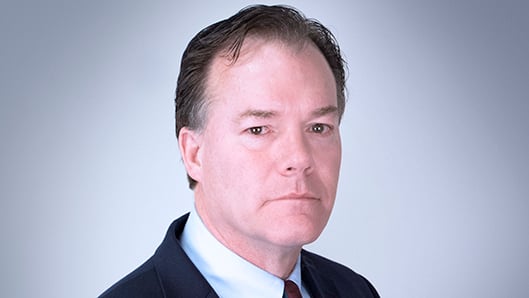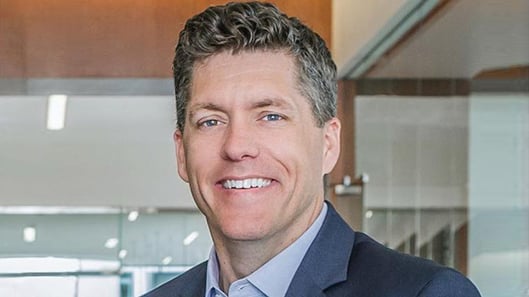Well Positioned: Keeping commercial real estate attractive to both local and out-of-state investors
Milwaukee’s commercial real estate market has been challenged by the COVID-19 pandemic, but its mix of properties and attractive pricing helped it weather the storm better than larger metro areas. The Milwaukee Business Journal recently assembled a panel of experts to explore the challenges and opportunities facing the commercial real estate market in southeastern Wisconsin.
Tracy Johnson: How would you describe the state of commercial real estate in Wisconsin today? Which segments or verticals are hot and which are not?
Glenn Roby: Corporate is not hot with only a few leases and build-to-suits going forward. There is still some paralysis there as people kick decisions down the road. Hospitality is not hot, but there are project starts out there. The residential market is semi-hot, with the action occurring at the two ends of the spectrum – at the affordable end and at the luxury end. There is a little malaise in the middle.
Why do you think that is?
Roby: There is a real challenge in multi-family housing, especially if it is wood construction, due to commodity pricing. Luxury is really the only segment that is able to command the rents needed to overcome some of the challenges we are seeing. You have to have a creative financing package, a development zone or TIF to supplement the affordable end of the market.
Andrew, how would you describe the commercial real estate market in southeastern Wisconsin right now?
Andrew Jensen: It is surprisingly stable. We are not in a financial crisis. There is liquidity in the market, banks are lending and transactions are occurring. People believe in the United States, people believe in the economy and we will recover. Interest rates are low and there is a lot of money out there to chase investments. Industrial is the leading flavor of the day for users and investment sales. Next is vacant land in all classes. Industrial is hanging in there, medical is somewhat flat. Retail and hospitality are having the most challenges.
Mary Fredrick: Hospitality is problematic, but it really depends on where you are. Clients with properties in major cities are having more difficulties because they really rely on conferences and meetings, which are not happening. People with condos in resort areas are doing great. We will see what that looks like come this winter, but right now they are doing really well, because people are looking for drivable destinations. Properties that are located right off the freeway seem to be doing okay, too, because they serve people who are just looking for a place to stay.
Roby: We are seeing exactly the same thing with hospitality. Conference and meeting spaces are being programmed out of some projects that we have on the boards right now.
Pat Lawton: Andrew is correct that we are not in a financial crisis, but the risk it could become one increases the longer the pandemic lasts. I would characterize the current market as uncertain and unequal. New projects are not moving forward because there are still so many unknowns about the duration of the pandemic. It is unequal in that multifamily, industrial, and medical office are doing fairly well, while lodging, retail and office are facing challenges.
How do we compare with other cities? Is there still an interest from out-of-state investors?
Jensen: We are faring much better than other large cities such as Chicago and Minneapolis, mostly because the civil unrest has not been as bad here. In addition, the central business districts in both of those cities, especially Chicago, rely on public transportation, which is a problem. Firms in those cities are not going back downtown. Industrial is quite active with some ground up speculative mult-tenant product currently under construction.
Roby: I can tell you it is pretty dismal for architects in Chicago right now, but some cities similar in size to Milwaukee are doing well. Richmond, Virginia, is tracking a lot like Milwaukee in development opportunities even though it has been a flashpoint for civil unrest. Things are also pretty strong in nearby Virginia Beach, which is along the coast. As for outside interest, we have two projects – one in Milwaukee and one in Madison – that are getting a second look by out-of-state investors.
Why do you think out-of-state investors would be looking at Milwaukee?
Fredrick: I think that our market is very stable.
Lawton: One reason is that most of the private-equity and hedge funds are not located in Wisconsin. These funds have raised a significant amount of money that they need to place, but there is a limited amount of safe opportunities. Industrial and multi-family opportunities in southeastern Wisconsin are quite appealing.
So we are seeing a fair amount of activity right now. Do we expect to see that ramp up at the end of the year?
Lawton: People now realize the pandemic is not going away quickly. And if the funds don’t deploy their money, they won’t hit the yield requirements for their investors.
How are you working with clients to take advantage of current conditions right now or in the future?
Jensen: It starts with an evaluation of their work force and type of business. Most of the office users are status quo. For the most part, their employees are working at home, and they are trying to figure out how they are going to bring them back. Most firms are not yet spending money on their office space to address what they think the new normal will be. The majority of firms have not figured that out yet, but they probably will in the next six to eight months. I think you will see more private offices, and an increase in meeting room spaces. Instead of having large lunchrooms companies may elect to have several smaller lunchrooms/common gathering areas.
Roby: From March through July, we were helping people understand the potential impacts of the pandemic and how to work through it. During the summer, we started focusing on the post-pandemic needs for offices. Now, we have a clearer sense of what that will mean and we are helping people who have committed to leases or are in the design or construction process. It’s personal, too. Our firm is moving to a new Milwaukee office next August. Everything that we are doing for our clients right now we are doing with ourselves as well.
Jensen: There has been a lot of talk about the office being dead, with people not needing office space. I don’t think the office is dead. I think it might temporarily downsize as people work from home, but I think it will come back. An office is critical to a firm’s culture and employees want to interact with other coworkers. I think the office will reinvent itself with different ways of working.
Fredrick: I agree. We are seeing a reduction in productivity because our people are not in the office. Part of productivity is teaching newer people how to do things. You can’t do that well over Zoom or a conference call. Culture is a very important part of an organization. It is very difficult to instill and promote that culture if everyone is working in different places. Onboarding has certainly become an issue because it is difficult to introduce someone to an organization when they are only interacting virtually.
Lawton: I would note that Johnson Financial just signed a major lease at Cathedral Square. Our bank is committed to having everybody working together in a downtown office environment. We believe there will be some changes after the pandemic, but there will be more similarities than differences to the way it was in the past. Businesses right now are focused on safety and solvency. At some point we will return to more normal times and the focus will return to maximizing revenue, profits and return on equity.
What has the arc been in terms of different real estate segments?
Lawton: The conversations are very different depending on who you are talking to. Certainly, it has been very difficult for the lodging industry. There are a lot of hotels in central business districts that are seeing very little demand. They have to figure out whether they will be open and then put a plan together and look for alternative sources of capital and equity. Retail had a lot of challenges coming into the pandemic and now they have the added challenges of being closed for long periods of time.
What about suburban versus downtown markets?
Jensen: The suburbs have been doing well. Irgens announced two new office buildings in Brookfield. The downtown office market is probably suffering the most, but it is nowhere near dead. Over the past five years there has been a tremendous amount of movement from the suburbs to the downtown. We are not hearing anybody say they are going to move from the downtown to the suburbs. Downtown will remain a hub for finance, lawyers, real estate brokers and other service industries. That is evidenced by Johnson Financial Group’s huge commitment in opening an office at Cathedral Place.
What if the younger population starts to move?
Jensen: There are some people moving to the suburbs but I do not see that affecting employers or employees officing in the CBD.
Roby: In major cities the cost-benefit equation to live downtown is upside-down. The value is diminished, but the cost of living remains. Those cities are seeing a lot of flight to first-ring suburbs or beyond. What we are trying to determine is how long will it take the value proposition of large cities to bounce back. If they don’t bounce back fairly quickly, they are going to have problems. In Milwaukee, fortunately, downtown costs are not as high, so the value proposition holds up.
Fredrick: We are seeing that as well. In the Chicago area, for example, clients are taking a look at the outlying suburbs as an alternative to developing in downtown Chicago.
What opportunities exist for real estate professionals to benefit from federal and state programs tied to COVID relief? How can they most effectively leverage those programs?
Fredrick: The pandemic has given us a fair amount of work to do. The federal government has fixed the glitch in the qualified improvement for non-residential real property (QIP). It is now retroactive for improvements made in 2018 and 2019. We have seen a lot of activity because of that – millions of dollars in deductions that people have been able to use. The federal CARES act increased the business limitation from 30 percent to 50 percent of adjusted taxable income. There was also a limitation on how you could use your business losses in terms of offsetting non-business income. That limit has been lifted for 2019 and 2020. They have also changed the treatment of net operating losses. It used to be that you could not carry back losses to offset prior-year income. Now you can carry your losses back five years. We are seeing a lot of money being refunded to people that way, which has been very helpful. The PPP loan program has also been very good for helping companies during the initial phase of the pandemic. Now we are trying to determine how much of the debt can be forgiven.
Lawton: PPP was broadly utilized. People can argue about various aspects of it, but it certainly did its job in providing liquidity. The Main Street program has been a disappointment, however, because a lot of business people have been frustrated by its complexity.
Fredrick: We are seeing the same thing. The Main Street program is confusing in that banks don’t know what their liability is.
What do you see happening with cap rates and pricing of inventory?
Lawton: I think things are very unequal when it comes to prices and cap rates. On one hand stabilized multifamily and industrial properties are trading at record prices while lodging properties for example are struggling. An example is the Palmer House in Chicago. It was appraised at $560 million in 2018, but had an appraisal in August at $305 million. That is an extreme example of what the pandemic has done to some properties.
Roby: As retail continues to struggle we are anticipating Malls will continue to devalue. If one of your largest tax payers is a retail-based property, I am very curious as to how that is going to impact the city’s approach to development. They are going to lose a lot of tax revenue.
Lawton: Some municipalities are already struggling to maintain their bond ratings. That is why people are pushing for state and local support in the next relief package.
What gives you the most optimism about today’s commercial real estate market?
Fredrick: There are always winners and losers in any market. Opportunities will always present themselves. There are people looking at distressed properties. We are still seeing a difference in the pricing valuations between the sellers and the buyers, which is based mainly on the discount each side wants to put on NOI (net operating income) moving forward. There is still a lot of uncertainty, because people don’t know how long it will take for a vaccine to become available. If it comes quicker, people with distressed properties may not want to sell.
Lawton: Americans are innovative. If we can solve the medical issue, then we will have a solid comeback. When the Milwaukee region’s economy comes back, the local real estate market will recover as well.
Jensen: To what Mary said, there are some value-add properties where investors will do good long-term. Out-of-state and local investors are purchasing properties for pennies on the dollar. As for users, I think you are going to see more of them buy their own real estate to control their destiny.
Roby: I think there will be a flight to quality, including Class A with all of the modern COVID-friendly attributes. I can’t stress enough how important building management will be going forward. As a service provider, we see an opportunity to help our clients by becoming trusted advisors. We are doing a lot of scenario building related to their spaces.
What are you most optimistic about?
Lawton: Industrial real estate. We are an industrial city and the time is right for industrial. That should favor southeastern Wisconsin from the Kenosha-Racine corridor all the way through Milwaukee.
Fredrick: Creativity. In every one of these downswings, people always come up with something new and interesting. I am optimistic to see what that will look like.
Roby: Innovation. All of this has sped up some of the trends that have slowly been making their way to Milwaukee from the coasts.
Jensen: I am optimistic because once again we have proven ourselves to be a stable real estate market. You don’t see a lot of real estate foreclosures, or companies going out of business.




